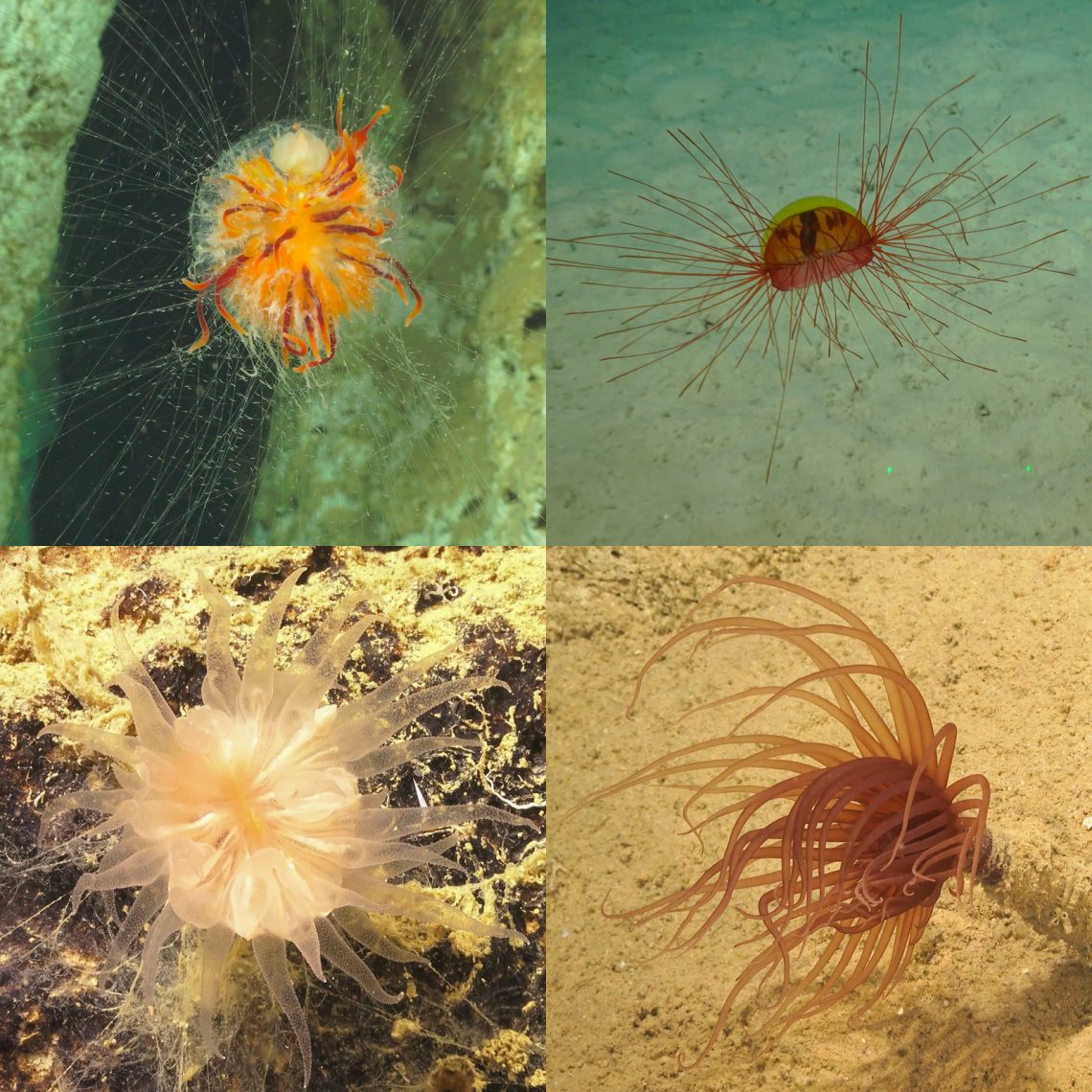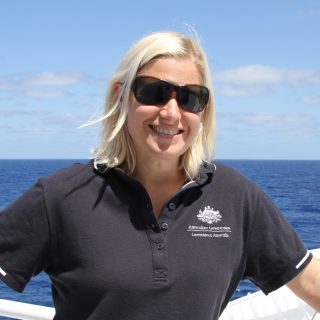For three months between 2008 and 2009, Geoscience Australia undertook a survey to the Western Australian margin in the same area we are now investigating from R/V Falkor. The previous survey was focussed on mapping the seafloor and understanding its geology – lots of maps, rocks, and mud. I was the sole ecologist on my leg of the survey back then, and so it is a treat to now find myself back in the same area but this time on a ship full of biologists!
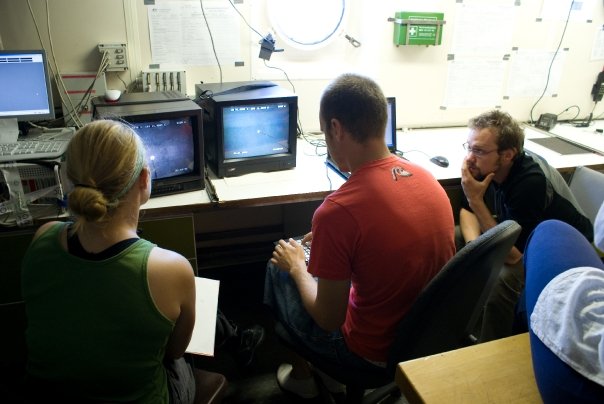
A Shot in The Dark
On the earlier survey, we used a couple of towed imagery systems to observe the seafloor. We saw purple sea cucumbers, acorn worm spirals, and red flashes of prawns; but the images weren’t suited to finding smaller animals or identifying the larger animals to genus or species.
Another challenge back then was that our imagery and sampling systems were separate, so we could not see the seafloor or gear when we collected rocks, sediment, and organisms. This was particularly frustrating after waiting hours to deploy a box corer to 4000 m depth, only to find it had not actually taken a sample hours later when it was retrieved!
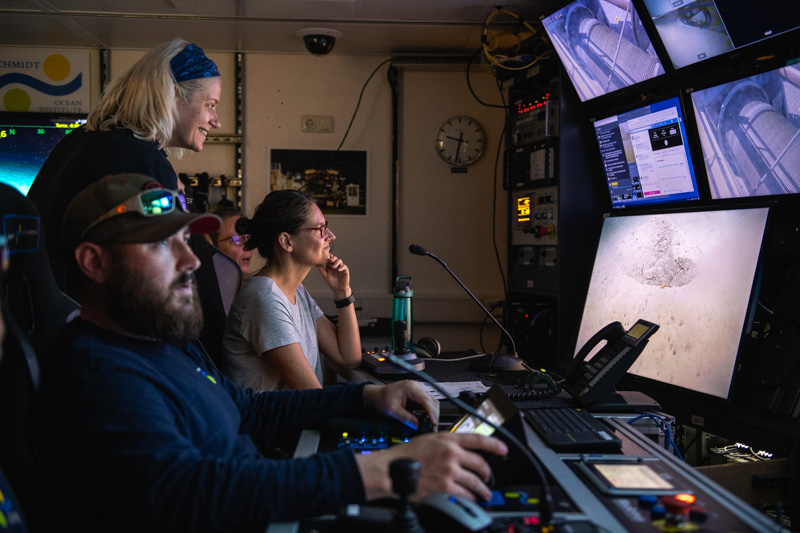
Precision Engineering and Spellbinding Imagery
So it is really special for me to be able to revisit this area with the SuBastian, a Remotely Operated Vehicle (ROV) capable of taking spectacular imagery and a huge range of samples at the same time, not to mention its ability to hold position on canyon walls and steep slopes. On our first dive, we were able to pause, zoom in, and collect an amazing array of animals that would have been missed with the older imagery systems I had used before: swimming polychaetes with glittering chaetae, glass sponges with long rooted spicules, and tube anemones with their sediment anchors.
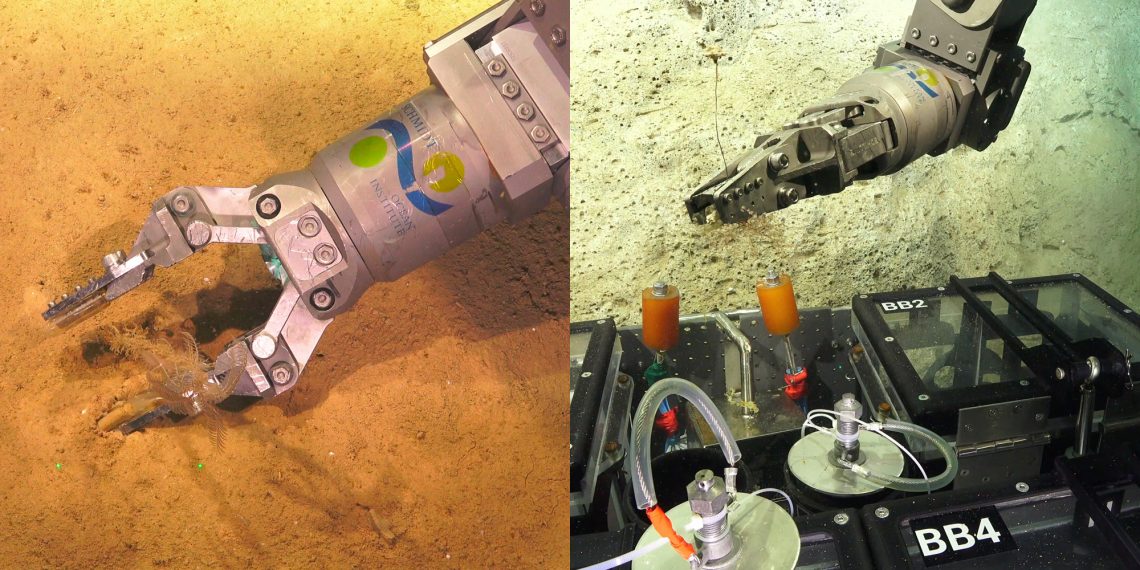
Technology has certainly evolved over the decade since I was last out here, and I’m really excited to see what else it brings us on this survey!
